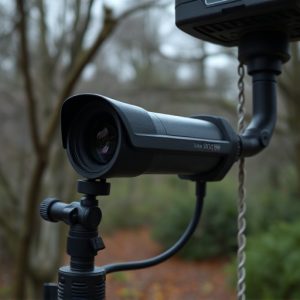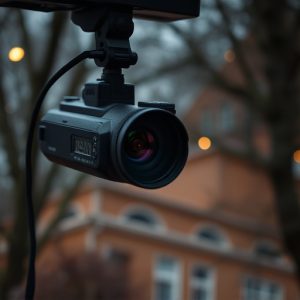Micro Cameras for Child Protection: A Comprehensive Guide to Safe Surveillance
Micro cameras offer a discrete yet powerful tool for child protection in homes, providing real-time…….
Micro cameras offer a discrete yet powerful tool for child protection in homes, providing real-time video feeds that enable constant monitoring via smartphones or tablets. Their benefits include discretion, hazard detection, and peace of mind, empowering parents to make informed decisions. However, they raise ethical dilemmas regarding privacy and legal considerations under data protection laws. Implementing micro cameras requires a strategic approach, including a thorough sweep, clear rules, open dialogue with children, responsible usage practices, and fostering an environment of trust and transparency.
“In today’s digital age, ensuring the safety and well-being of your children is a top priority. This comprehensive guide explores the world of micro cameras as a powerful tool for parental monitoring. From understanding the advanced technology behind these tiny yet potent devices to navigating legal considerations, we demystify their use in child protection.
We provide a step-by-step approach to conducting a surveillance device sweep of your property and offer best practices to maintain a healthy balance between safety and privacy.”
- Understanding Micro Cameras: Unveiling the Technology for Child Safety
- Benefits of Installing Micro Cameras in Your Home for Parental Monitoring
- Ethical Considerations and Legal Aspects of Using Micro Cameras for Child Protection
- A Step-by-Step Guide to Conducting a Surveillance Device Sweep of Your Property
- Best Practices for Maintaining Privacy While Implementing Micro Camera Systems for Kids' Safety
Understanding Micro Cameras: Unveiling the Technology for Child Safety
Micro cameras, also known as tiny surveillance devices, have revolutionized child safety measures in residential settings. These advanced, miniature technologies offer parents and caregivers a discrete yet powerful tool to monitor and protect their children. With their compact size, micro cameras can be strategically placed within homes, providing real-time video feeds that allow adults to keep an eye on kids’ activities, especially when unsupervised.
The integration of micro cameras into child protection strategies offers several advantages. They provide a level of discretion, enabling constant observation without drawing attention to the surveillance aspect. This technology can detect potential hazards or unusual behaviors, ensuring prompt intervention if needed. Moreover, micro cameras for child protection offer peace of mind, empowering parents to make informed decisions regarding their children’s safety and well-being within their own homes.
Benefits of Installing Micro Cameras in Your Home for Parental Monitoring
Installing micro cameras in your home offers a powerful tool for parental monitoring, providing peace of mind and enhancing safety for your children. These tiny yet advanced devices allow parents to keep an eye on their kids’ activities while they are at school, in their rooms, or even outdoors. With real-time video feeds accessible via smartphones or tablets, parents can quickly respond to any concerning situations and ensure their child’s well-being.
Micro cameras for child protection promote a sense of security by enabling parents to identify potential risks or inappropriate behaviors. They offer an effective way to deter harmful activities and provide valuable evidence in case of emergencies. By remotely monitoring your home, you can stay informed about your child’s daily routines, foster open communication, and make educated decisions regarding their care.
Ethical Considerations and Legal Aspects of Using Micro Cameras for Child Protection
The use of micro cameras for child protection raises important ethical and legal questions. While these tiny devices offer enhanced surveillance capabilities, they also pose significant privacy concerns. Installing such cameras in residential properties without proper consent from all occupants can infringe upon personal space and create an atmosphere of distrust. Additionally, the unauthorized recording of individuals, especially children, may lead to severe legal repercussions under data protection laws.
It is crucial for parents or guardians considering micro cameras for child safety to balance their protective instincts with the rights of their children to privacy. Legal frameworks surrounding surveillance technology vary by region, and understanding these regulations is essential. Parents should consult legal experts to ensure they comply with local laws and respect the privacy rights of all family members, especially when employing advanced monitoring solutions like micro cameras for child protection.
A Step-by-Step Guide to Conducting a Surveillance Device Sweep of Your Property
A Step-by-Step Guide to Conducting a Surveillance Device Sweep of Your Property
Before conducting a surveillance device sweep, ensure you have a clear plan and the right equipment, focusing on areas where micro cameras for child protection might be strategically placed. Start by inspecting all outdoor areas, including gardens, fences, and windows, as these are common entry points for potential intruders. Use a metal detector to scan for any hidden devices buried under the ground or embedded in structures. Remember to check door and window frames, and consider using thermal imaging cameras to detect heat signatures indicating hidden equipment.
Inside your home, systematically search every room, paying close attention to spaces that offer privacy, such as bedrooms, bathrooms, and offices. Examine wall sockets and electrical boxes for any unusual fittings or modifications that could hide micro cameras. Utilize specialized tools designed to locate wireless signals to track down connected devices. Keep records of all findings and ensure you follow local laws regarding surveillance to maintain legal compliance throughout the process.
Best Practices for Maintaining Privacy While Implementing Micro Camera Systems for Kids' Safety
When implementing micro cameras for child protection within a residential property, maintaining privacy is paramount. It’s crucial to establish clear rules and boundaries regarding camera usage both within the home and with the children. Engage in open dialogue with your kids about their privacy rights and the purpose of the cameras. Ensure all devices are positioned strategically for safety, rather than intrusively, keeping them out of bedrooms and private spaces. Use password-protected access and encrypt footage to safeguard sensitive information.
Regularly review and update privacy settings on all micro camera systems. Only store recorded footage for as long as necessary, securely erasing or anonymizing data afterward. Educate both children and adults in the household about responsible camera usage, emphasizing that these devices are tools for safety, not constant surveillance. Foster an environment where trust is built through transparency and respect for privacy, ensuring your micro cameras for child protection serve their intended purpose without infringing on personal boundaries.
Implementing micro cameras for child protection can significantly enhance parental monitoring, but it’s crucial to balance this with ethical considerations and legal boundaries. By following a thorough surveillance device sweep guide and adhering to best practices for privacy maintenance, parents can ensure their homes become safe havens for their children while respecting personal freedoms. Remember, the right technology, coupled with responsible usage, can foster a secure environment without compromising on privacy.


